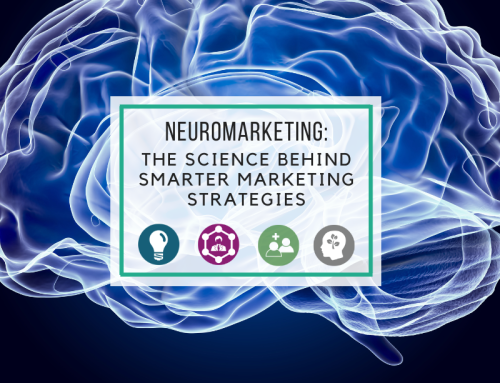Most companies know marketing is an important part of business. We would argue it isn’t just a part of your business — marketing is your business. Marketing is a broad term that describes a bunch of activities or tactics. It is consumer research, advertising, product design, brand awareness — every tool you use to tell your story and make your product and/or services known to your potential customers. And it is — or should be — driven by strategy.
But how do you develop a strategy that works? And what is strategy?
 Strategy may seem like an elusive term, something that sounds nice, but isn’t always easy to implement. Strategy is a trip around the world, and all the stops in between; what you expect to see; and how you’re going to get there. Strategy is not advertising on LinkedIn or Facebook. Those are tactics. As Seth Godin says, “the right strategy makes any tactic work better. The right strategy puts less pressure on executing your tactics perfectly.”
Strategy may seem like an elusive term, something that sounds nice, but isn’t always easy to implement. Strategy is a trip around the world, and all the stops in between; what you expect to see; and how you’re going to get there. Strategy is not advertising on LinkedIn or Facebook. Those are tactics. As Seth Godin says, “the right strategy makes any tactic work better. The right strategy puts less pressure on executing your tactics perfectly.”
Let’s look beyond the buzzword. Strategy is a plan of action designed to achieve an overall goal. Or, as Webster defines it, “the art of devising or employing plans toward a goal.” Strategy takes many different forms and can be macro (business strategy) to micro (project strategy). Strategy at Fuse Associates means determining three broad, multi-month/year initiatives that the firm will undertake to support meeting the firm’s ROI. For example, determining what the client’s digital marketing efforts should entail — new or enhanced website, digital/online advertising, SEO, content marketing, earned and paid media, etc.
Here are five steps to develop your marketing strategy:
- Identify your overall business goals. Goal setting is a key element of any business plan. They describe what your company expects to accomplish over a set period of time. Goals give your business direction and provide metrics by which you can measure results. Most companies have broad goals that pertain to the business as a whole, and more specific goals for each area of the business, department and even employees.
- Understand what your marketing goals are. Once you’ve identified your business goals, understand your marketing-specific goals. For example, brand awareness, conversion, new sales leads. What is it you want to achieve with your marketing plan?
- Know on which part of the sales funnel you are focusing. Marketing strategy and tactics are dependent on the sales funnel. Who is your target audience and where are they in the buying process? Marketing for brand awareness looks very different than marketing to close the deal.
- Determine your measurement goals and make sure your activities align with these goals. Goals, goals goals. Every marketing activity should align with your goals. If your company has never had a digital (online) presence and you’ve just launched a digital advertising campaign, know that the first step is to raise brand awareness before selling. Think of brand awareness as the “Hello, my name is ___” phase of the sales and marketing funnel. Once your name becomes familiar with your target online audience, messaging can shift to sales.
- Think long-term. Strategy isn’t something that is accomplished in three months, but there should be deliverables and milestones all along the way. For example, launching a marketing campaign to gain brand awareness; starting digital advertising; developing your value proposition. Show forward motion. Get that RFP out the door. Finish your presentation or brochure. Start developing a blog plan. Work on a client survey or email marketing campaign. Make quick fixes to freshen up your website. Ensure your brand messaging is cohesive and ties into your value proposition. Find a way to strike the balance between getting distracted by tactics and continuing to move forward with what needs to be done as you fine-tune your marketing strategy.
When we first engage a client to develop marketing strategy, we start by identifying their target audience. Spoiler: your target market is not “everybody.” Clearly defining your audience guides your strategy. So often, we find businesses approach strategy as if they are shooting arrows into the dark — blindfolded — and hoping for a hit. Know who/what you’re aiming for and develop a strategy that keeps those arrows flying straight toward your target.
As you craft your marketing strategy, it’s also important to take a hard look at what you’ve done in the past. What worked? What didn’t? Why? Your business is unlike any other and there is no cookie-cutter, one-size-fits-all approach to marketing. Know what works for you. And understand as you develop your strategy and implement tactics, testing and metrics will help paint a clear picture of what works.
Finally, achieving alignment on the leadership level is a must. When we work with our clients, we meet with each leadership team member individually to understand what they expect from marketing. This is mission critical. Once you have your leadership team on the same page with an understanding of how each individual and department plays a role in a cohesive marketing strategy, it’s time to move forward with tactics.
Don’t leave your marketing strategy to guesswork. Contact Fuse Associates today and let us help you develop a cohesive and targeted marketing strategy that aligns with your business goals.
Stay tuned for our next blog on the next steps to take once you’ve developed your strategy.






That’s interesting post ..
I added your web into my favourites!
Keep up good work! Looking forward for future updates.
Best regards,
-John